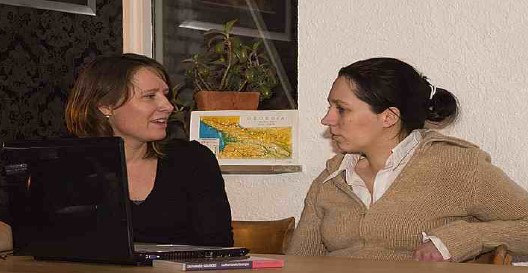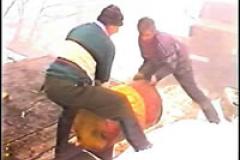
In 2001 we first traveled to Georgia: two environmental activists from Europe, shocked by the multitude of problems and the scale of pollution in Caucasus. We couldn't figure out where to start or what to do, but we decided the first step should be to cover issues of Georgia and bring them to Europe... and now to South America. To start about nuclear waste remaining unguarded after the Soviet Union collapsed, was more or less random. This documentary could also have been about deforestation or industrial chemical pollution.When we heard about citizens getting injured by finding and sometimes trading radioactive materials we took our video camera, planned our expedition and went for the details. With hardly any budget or equipment but with the help of friends in and out of Georgia we managed to get the interviews. We obtained interesting footage shot by the Radiation Safety Service of the Ministry of Environment. These tapes reveal some of the missions to find and secure radioactive sources. Dangerous work done by Georgian staff, risking their own health to prevent more accidents among citizens. Now, almost a decade later, we haven't heard of any major improvements. Incidents still occur. And not only in Georgia. Anywhere where societies collapse or corruption rages, long-lasting waste disappears into dark circuits and appears to cause harm. The question remains: is it wise to invest in nuclear energy and “solutions” when trash cannot be controlled?
Janita Top, Marij Kloosterhof
2001 foi a nossa primeira viagem para a Geórgia: duas ativistas ambientais da Europa, chocadas com a quantidade de problemas e a escala de poluição no Cáucaso. Nós não conseguíamos saber por onde começar ou o que fazer, mas decidimos que o primeiro passo seria cobrir questões da Geórgia e trazê-las para a Europa ... e agora para a América do Sul. Iniciar pelo lixo nuclear largado sem cuidados após o colapso da União Soviética foi uma escolha mais ou menos aleatória. Este documentário também poderia ter sido sobre desmatamento ou poluição química industrial. Quando ouvimos sobre os cidadãos que ficaram feridos por encontrar e, por vezes, negociar material radioativo, nós pegamos nossa câmera de vídeo, planejamos nossa expedição e fomos conhecer os detalhes. Com quase nenhum orçamento ou equipamentos, mas com a ajuda de amigos dentro e fora da Geórgia, conseguimos realizar as entrevistas. Obtivemos curta metragens interessantes através do Serviço de Segurança Radiológico do Ministério do Meio Ambiente da Geórgia. Estas fitas revelam algumas das missões de encontrar e assegurar estas fontes de radiação. Trabalho perigoso feito pela equipe da Geórgia, arriscando a própria saúde para evitar mais acidentes entre os cidadãos. Agora, quase uma década depois, não ouvimos nenhuma grande providência. Incidentes ainda ocorrem. E não apenas na Geórgia. Em qualquer lugar onde há o colapso das sociedades ou corrupção, resíduos de longa duração desaparecem em circuitos do mercado negro e reaparecem causando danos. A questão permanece: é aconselhável investir em energia nuclear e "soluções", quando o lixo não pode ser controlado?
Janita Top & Marij Kloosterhof





